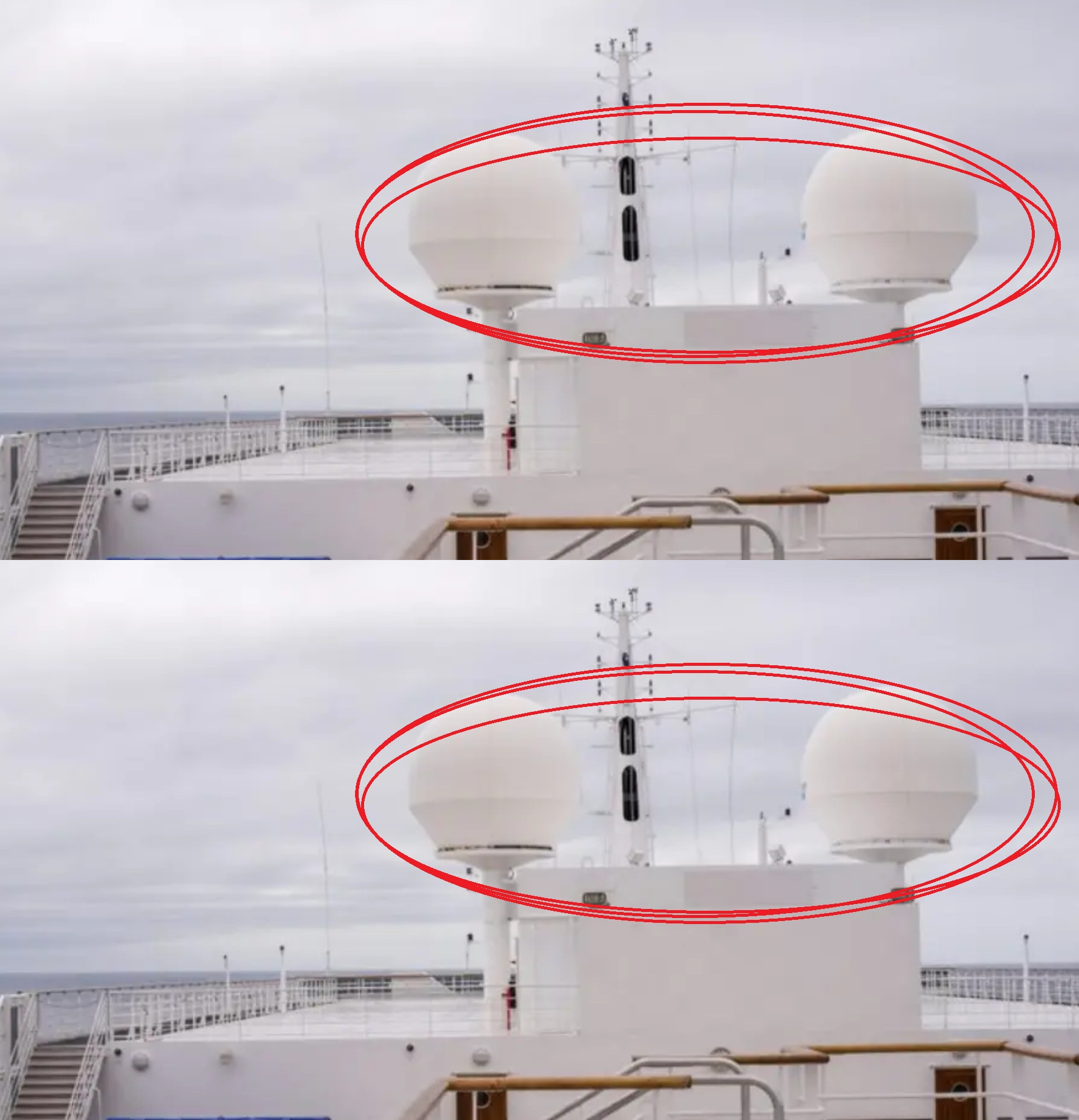If you’ve ever stood on a dock, watching a massive cruise ship glide past, you’ve probably noticed those large, white, spherical structures sitting high up on the ship’s top deck. At first glance, they might look like oversized golf balls or decorative features meant to enhance the ship’s futuristic look.

But once your curiosity kicks in, you start to wonder: what exactly are those big white balls on top of cruise ships, and what purpose do they serve? After digging a little deeper into the world of maritime technology, I found out that these orbs are called radomes—a blend of the words “radar” and “dome.” Far from being just eye-catching additions to a cruise ship’s silhouette, radomes play a vital role in helping these enormous vessels stay connected and navigate safely across the vast oceans.
A radome is essentially a protective shell that houses and shields radar antennas and satellite communication equipment from harsh weather, salt spray, and wind. These antennas are critical for enabling a cruise ship to communicate with the outside world—whether that means talking to shore-based systems, other ships nearby, or even connecting passengers to the internet while at sea.
The radar inside scans for other ships, monitors weather conditions, and detects landmasses, all while sending and receiving vital data that helps the ship navigate safely and efficiently. You might ask, why are they always white? It’s not just an aesthetic choice. The color white reflects sunlight more effectively than darker colors, which helps keep the sensitive equipment inside from overheating. Radar systems generate heat on their own, and the tropical sun beating down on a ship in the middle of the ocean doesn’t help. By painting radomes white, cruise lines can protect this critical technology from overheating while also maintaining a uniform, clean look that blends in with the ship’s overall design. It’s functional and fashionable all at once.
Not every cruise ship sports these white domes. Generally, you’ll only find radomes on larger, more modern vessels—those equipped with the latest and most sophisticated communication and navigation technology. Their presence is a sign that the ship is built for more than just luxury; it’s a floating marvel of engineering that prioritizes passenger safety, operational efficiency, and constant connectivity. These advanced radomes make it possible for the crew to track weather patterns in real time, avoid collisions, and stay in touch with coastal authorities no matter how far from shore the ship may be. The importance of radomes becomes even more apparent when you realize they’re not limited to cruise ships. You’ll also find them on airplanes, satellites, naval vessels, and telecommunication towers. Anywhere there’s a need to protect sensitive antenna systems from wind, rain, snow, or debris, radomes are used. They’re crucial to maintaining clear, uninterrupted communication links and accurate radar readings, even in the most challenging conditions. So next time you’re lounging on a cruise ship’s deck, gazing out at the ocean or admiring the ship’s high-tech features, you’ll know that those big white balls overhead are doing a lot more than just sitting pretty. They’re guarding some of the most essential systems on the ship, ensuring that the journey remains smooth, safe, and well-connected. They’re like silent sentinels, constantly working behind the scenes so passengers and crew can enjoy their voyage without worrying about losing contact with the outside world. It’s pretty amazing to think that something so simple-looking is so vital to the ship’s operation. The more you learn about cruise ship technology, the more you appreciate how much thought and engineering go into even the smallest details—right down to those curious white spheres watching over the seas.





